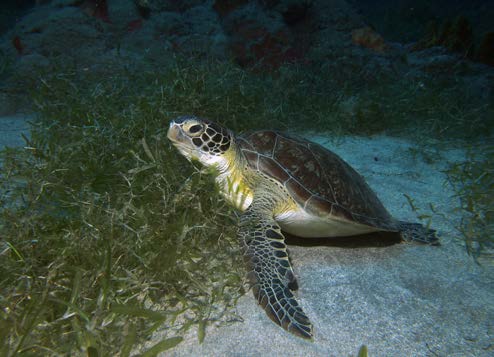A team of American scientists from Florida International University (FIU), including Dr. Jeremy Kizska, spent time with the Réserve as part of their regional mission. On June 18- 22, 2018 in Tintamare’s Baie Blanche, green turtles were the focus of research designed to better understand their relationship with the plant beds currently colonized by Halophila stipulacea sea grass. This invasive species was introduced via anchors and ballast water from boats, and little by little gobbled up space in the underwater plant beds, where it is now in competition with two native species: Syringodium and Thalassia. The scientists observed the location of these underwater reptiles throughout the day, as well as their activities, as they tried to identify the different algae on their menu. This study will also allow for an estimation of the size of the turtle population that visits the plant beds in Baie Blanche, and if it was impacted by Irma. The first data reported by the Réserve was that they have not found any animal cadavers at the site. The data that still needs to be thoroughly analyzed seems to mark a major change in the habits of the sea turtles in Guadeloupe, as in Saint Martin, following Irma and the other meteorological events that took place in late 2017. This study should have also allowed for the taking of skin samples into order to open the door for the first local look at Fibropapillomatosis, a herpes virus that affects certain sea turtles around the world, and the factors that trigger the risk of this disease that scientists are just beginning to understand.
Turtles And Sea Grass Beds
Une tortue verte sur Halophila - Green turtle on Halophila © Julien Chalifour

















